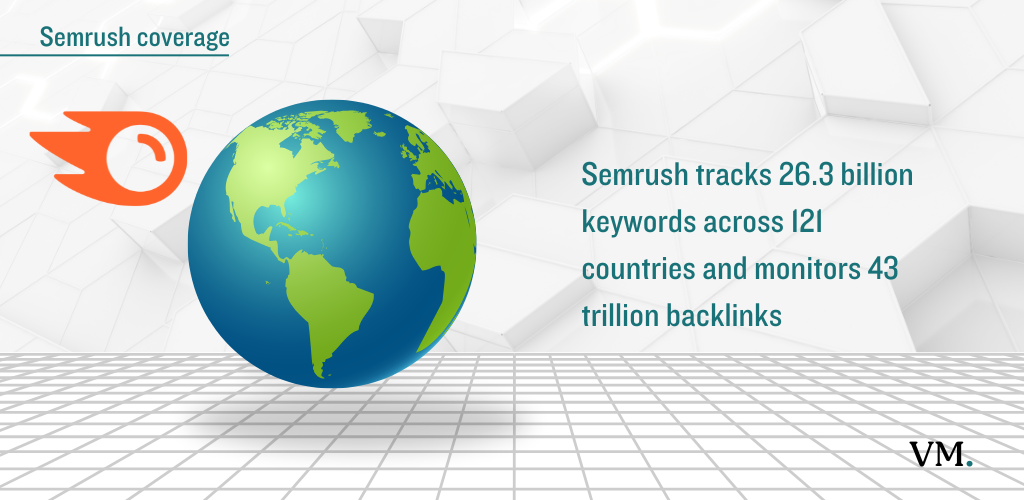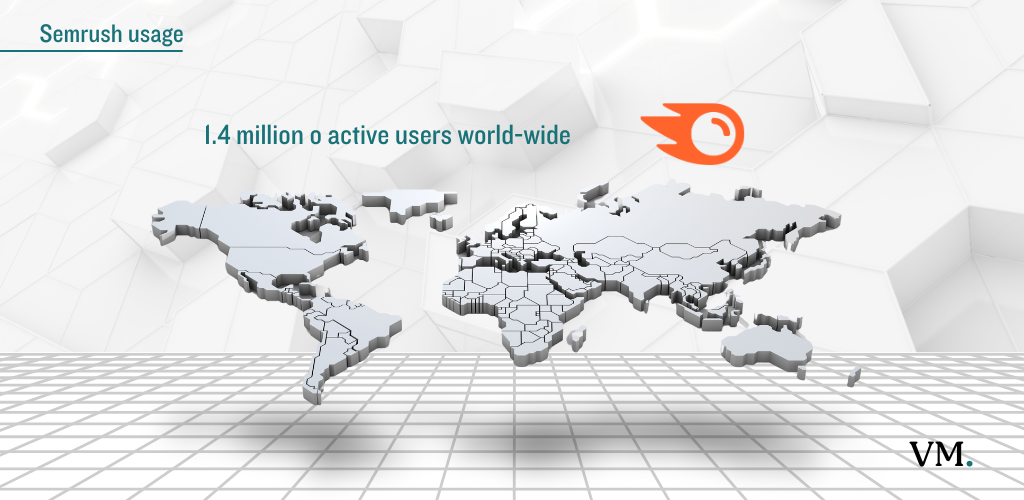If you’re searching for a comprehensive answer to “what is Semrush” and how it can power your digital marketing in 2025, this guide delivers a deep, numbers-driven analysis, user sentiment, and practical insights.
What Is Semrush?
Semrush is a leading online visibility management platform, widely recognized as an industry standard for SEO, PPC, content marketing, and competitive intelligence. It offers over 50 integrated tools and add-ons, covering everything from keyword research and site audits to social media management and market research. As of 2025, Semrush tracks 26.3 billion keywords across 121 countries and monitors 43 trillion backlinks, providing a vast data foundation for digital marketers.

Key Capabilities
- Word Research: Analyze search volume, difficulty, trends, and intent for millions of keywords.
- Competitor Analysis: Track competitors’ rankings, backlinks, ad strategies, and content performance.
- Site Audit: Automated scans to identify and prioritize technical SEO issues.
- PPC Optimization: Refine paid campaigns using keyword and product listing ad insights.
- Content Marketing Toolkit: Plan, write, and optimize content for maximum visibility and engagement.
- Local SEO Analytics: Monitor Google Business Profile and local search rankings.
- CRM-Style Link Building: Organize outreach and manage backlink campaigns efficiently.
- AI-Powered Features: Personalized data insights and generative AI tools for content and strategy.
Semrush by the Numbers (2025)
- Active Users: 1.4 million (projected for 2025)
- Paying Customers: 135,000
- Revenue (2024): $307 million
- Q4 2024 Revenue: $102.6 million (+23.1% YoY)
- Market Capitalization: $2.21 billion
- Keyword Database: 26.3 billion keywords
- Backlink Database: 43 trillion backlinks
- Global Reach: Users in 121+ countries; ~700,000 in the US alone.

What People Ask About Semrush
- Is Semrush worth the price?
- Most users say yes, especially for agencies and serious marketers, but it’s considered expensive for small businesses and beginners.
- Most users say yes, especially for agencies and serious marketers, but it’s considered expensive for small businesses and beginners.
- How accurate is Semrush data?
- Generally praised for accuracy in keyword and competitor research, but some users report occasional inaccuracies in rankings and crawling issues.
- Generally praised for accuracy in keyword and competitor research, but some users report occasional inaccuracies in rankings and crawling issues.
- Does Semrush work for PPC and content marketing?
- Yes, it offers robust PPC data and a full content marketing toolkit, making it more than just an SEO tool.
- Yes, it offers robust PPC data and a full content marketing toolkit, making it more than just an SEO tool.
- Can I use Semrush on mobile?
The platform is not optimized for mobile devices, which is a common complaint.
What Users Like
- All-in-One Solution: Combines SEO, PPC, content, and competitive intelligence in one platform—saving time and consolidating workflows.
- Data Depth: Massive databases for keywords and backlinks, with real-time, actionable insights.
- Innovative Features: Continual updates, AI-driven tools, and unique features like search intent analysis and CRM-style link building.
- Generous Reporting Limits: Allows more queries and exports compared to many competitors.
- Strong Community: Over 10 million users have tried Semrush, creating a robust ecosystem and feedback loop for ongoing improvements.
What Users Dislike
- Pricing: Starting at $129.95/month (annual contract), it’s expensive for individuals and small teams. Add-ons for advanced features are also pricey.
- Learning Curve: The sheer number of tools and features can be overwhelming for new users, requiring significant time to master.
- Single User Limitation: All plans come with only one user account; adding more users increases costs significantly.
- Limited Search Engine Coverage: Only provides keyword data for Google, while some competitors offer data for multiple search engines.
- Mobile Experience: Not responsive or user-friendly on smartphones.
- Crawling Issues: Occasionally fails to crawl certain competitor websites or provides incomplete ranking data.
- Local SEO Toolkit: Needs further development and more features to match specialized local SEO tools.
What Users Hate
- Complex Pricing Structure: Confusing tiers and add-ons can frustrate buyers trying to choose the right plan.
- Mandatory Credit Card for Trial: You need a credit card to access the free trial, which some users find off-putting.
- Add-On Costs: Essential features like advanced competitive intelligence may require expensive add-ons, pushing total costs much higher.
Who Should Use Semrush in 2025?
Semrush is best suited for:
- Agencies and Enterprises: Need comprehensive, scalable solutions for multiple clients or large-scale campaigns.
- E-Commerce Businesses: Optimize product listings, monitor competitors, and manage PPC at scale.
- Content Marketers and SEOs: Plan, execute, and measure content strategies with deep keyword and competitor research.
- Local Businesses: Improve Google Maps and local search rankings, though dedicated local SEO tools may still be needed for some use cases.
How Does Semrush Actually Work, How Do They Get the Data, and How Reliable Is That Data?
How Semrush Works
Semrush is a digital marketing platform that provides insights into website performance, keyword rankings, competitor strategies, and more. It operates by collecting and analyzing vast amounts of online data, then presenting this information in actionable formats for users.
Data Collection Methods
Semrush uses several primary techniques to gather its data:
- Web Crawling: Semrush deploys its own bots (similar to search engine crawlers) to scan billions of web pages. These crawlers analyze site content, structure, metadata, and backlinks, building a comprehensive index of the web.
- SERP Analysis: The platform continuously monitors and records Google search engine results pages (SERPs), capturing data on organic listings, paid ads, featured snippets, and other SERP features. This allows Semrush to simulate search results and estimate keyword rankings and visibility.
- Keyword Data Aggregation: Semrush tracks search queries, keyword volume, competition, and ranking data across different regions and languages by analyzing Google’s SERPs and aggregating this information into its databases.
- Third-Party Data Integration: In addition to its own crawling, Semrush supplements its datasets with information from third-party sources to enhance accuracy and coverage.
- User Activity Data: While not always directly observable, Semrush may use anonymized user behavior data to refine its keyword and competitive insights.
Data Processing and Analysis
Once collected, Semrush processes the data through several steps:
- Data Cleaning and Structuring: Raw data is cleaned, organized, and structured to ensure consistency and usability.
- Algorithmic Analysis: Advanced algorithms analyze the data to identify trends, estimate metrics (such as traffic and keyword difficulty), and generate actionable insights.
- Cross-Verification: Data is cross-referenced with multiple sources and checked for consistency to minimize errors and discrepancies.
How Reliable Is Semrush Data?
Strengths
- Broad Coverage: Semrush tracks billions of keywords and trillions of backlinks, providing a broad and deep dataset for analysis.
- Regular Updates: The platform updates its data frequently, ensuring that users have access to recent trends and changes in the digital landscape.
- Quality Control: Semrush employs rigorous checks, cross-verifies data, and uses sophisticated algorithms to maintain high data quality.
Limitations and Potential Sources of Error
- Dynamic Web Environment: The internet changes rapidly. Website updates, new content, and shifting SERPs can make some data outdated before the next crawl or update.
- Algorithmic Estimates: Many metrics (like traffic, keyword volume, and ranking) are estimates based on algorithms, not direct measurements. This can introduce inaccuracies, especially for niche topics or less-trafficked sites.
- Data Collection Frequency: Some metrics may not be updated as frequently as changes occur online, leading to temporal gaps.
- Limited Access: Semrush cannot access private or restricted website data, which can result in incomplete datasets for certain sites.
- Regional and Niche Variance: Data accuracy can vary by region, language, and market segment, with more variance in less commonly tracked areas.
Practical Reliability
- Keyword Research: Generally reliable for identifying trends and relative rankings, but exact search volumes and positions may differ from actual results.
- Competitor Analysis: Useful for spotting general strategies and backlink profiles, but should be cross-checked with other tools for precision.
- Traffic Estimates: Good for broad comparisons and trend analysis, but not always precise in absolute numbers.
- Website Audits: Effective for identifying technical issues, but manual verification is recommended for critical decisions.
Best Practices for Using Semrush Data
- Cross-Reference: Always verify Semrush data with other SEO tools and analytics platforms for critical decisions.
- Focus on Trends: Use Semrush to identify patterns and trends rather than relying on exact figures.
- Manual Checks: Supplement automated findings with manual reviews, especially for high-stakes campaigns.
Final Verdict: Is Semrush Still a Leader in 2025?
Semrush remains a powerhouse for digital marketing professionals, with a rapidly growing user base, unmatched data depth, and innovative features. While its cost and complexity may be barriers for some, the platform’s value and capabilities are widely recognized—91% of users would recommend it, and 96% plan to renew their subscriptions. For those serious about online visibility and competitive advantage, Semrush is a top-tier choice in 2025.
Summary Table: Semrush Pros and Cons
| Pros | Cons |
|---|---|
| All-in-one digital marketing suite | Expensive for small businesses |
| Only Google keyword data | Massive keyword & backlink databases |
| Accurate, real-time insights | Steep learning curve |
| Innovative, AI-powered tools | One user per plan, pricey add-ons |
| Strong community & support | Not mobile-friendly |
| Generous reporting & export limits | Complex pricing, credit card for trial |
Bottom Line
If you’re asking “what is Semrush” in 2025, it’s the most comprehensive, data-driven platform for SEO, PPC, and digital marketing, trusted by over a million active users worldwide. Its strengths far outweigh its drawbacks for businesses ready to invest in serious online growth.
Semrush is an all-in-one digital marketing platform that offers tools for SEO, content marketing, competitor analysis, social media, and paid advertising. It helps users gather and analyze data to make informed decisions, find new opportunities, and monitor progress against competitors
Semrush gathers data through several methods:
- Web Crawling: Its proprietary bots scan billions of web pages to collect information on keywords, backlinks, and site structure.
- SERP Analysis: It monitors Google’s search engine results pages (SERPs) to track rankings, ads, and SERP features.
- Third-Party Data: Semrush supplements its own data with information from external partners.
- User Contributions: Some data is enhanced by anonymized user activity and inputs
Semrush data is generally reliable for trend analysis, keyword research, and competitor insights. However, several factors can affect accuracy:
- Update Frequency: Data is updated regularly, but there may be a lag between real-world changes and their appearance in Semrush.
- Industry/Niche Variance: Popular industries tend to have more accurate data; niche markets may see less precision.
- Estimates vs. Actuals: Some metrics, like traffic and keyword volume, are algorithmic estimates and may not match exact figures.
- User-Generated Data: While this can enhance the database, it may also introduce inconsistencies.
For critical decisions, it’s best to cross-reference Semrush data with other sources.
- Keyword Research: Tools for search volume, difficulty, trends, and competitor gaps.
- Site Audit: Automated scans for technical SEO issues with prioritized recommendations.
- Competitor Analysis: Insights into competitors’ rankings, backlinks, and ad strategies.
- Content Marketing: Planning, writing, and optimizing content.
- Social Media Management: Scheduling, posting, and analytics for major platforms.
- Advertising Tools: PPC research and optimization
Pros:
- Robust SEO and advertising tools
- Comprehensive competitive intelligence
- Powerful site audit and keyword research features
- Strong educational resources and support1
Cons:
- Expensive pricing, especially for advanced features
- Steep learning curve and complex interface for beginners
- Limited number of projects on lower-tier plans
- Some features (like API access) restricted to higher tiers
- Slow report generation at peak times
- Pro: $139.95/month (or $117.33/month billed annually)
- Guru: $249.95/month (or $208.33/month billed annually)
- Business: $499.95/month (or $416.66/month billed annually)
- Each plan includes only one user; additional users cost extra
Yes. The Keyword Magic Tool has a “questions” filter that shows popular queries containing words like “who,” “what,” “where,” “when,” “why,” and “how.” This helps you identify and target questions your audience is searching for
While Semrush is powerful, its interface and breadth of features can be overwhelming for beginners. There is a learning curve, but Semrush offers educational resources and tutorials to help new users get started
Semrush’s social media toolkit currently supports Facebook, Instagram, X (Twitter), LinkedIn, Pinterest, and Google My Business. It does not support platforms like Snapchat or TikTok as of 2025
Always cross-reference Semrush data with other analytics or SEO tools. This is especially important for niche industries or when making high-stakes decisions



